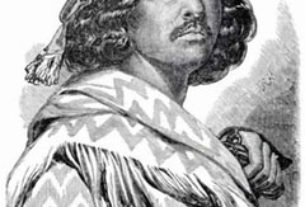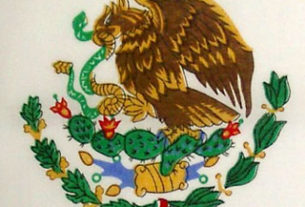Joseph Sorrentino
Javier Alvarado Saloma carefully cuts a piece of leather on which he’s traced an outline using a template. “I use either cow or pig skin,” he says, as he concentrates. Cutting the leather is the first step of several needed to make a mask. Two weeks after cutting the leather, he’ll have a finished mask, one that will eventually be used during carnaval, in Huejotzingo (typically shortened to “Huejo”), a pueblo mágico in Puebla.
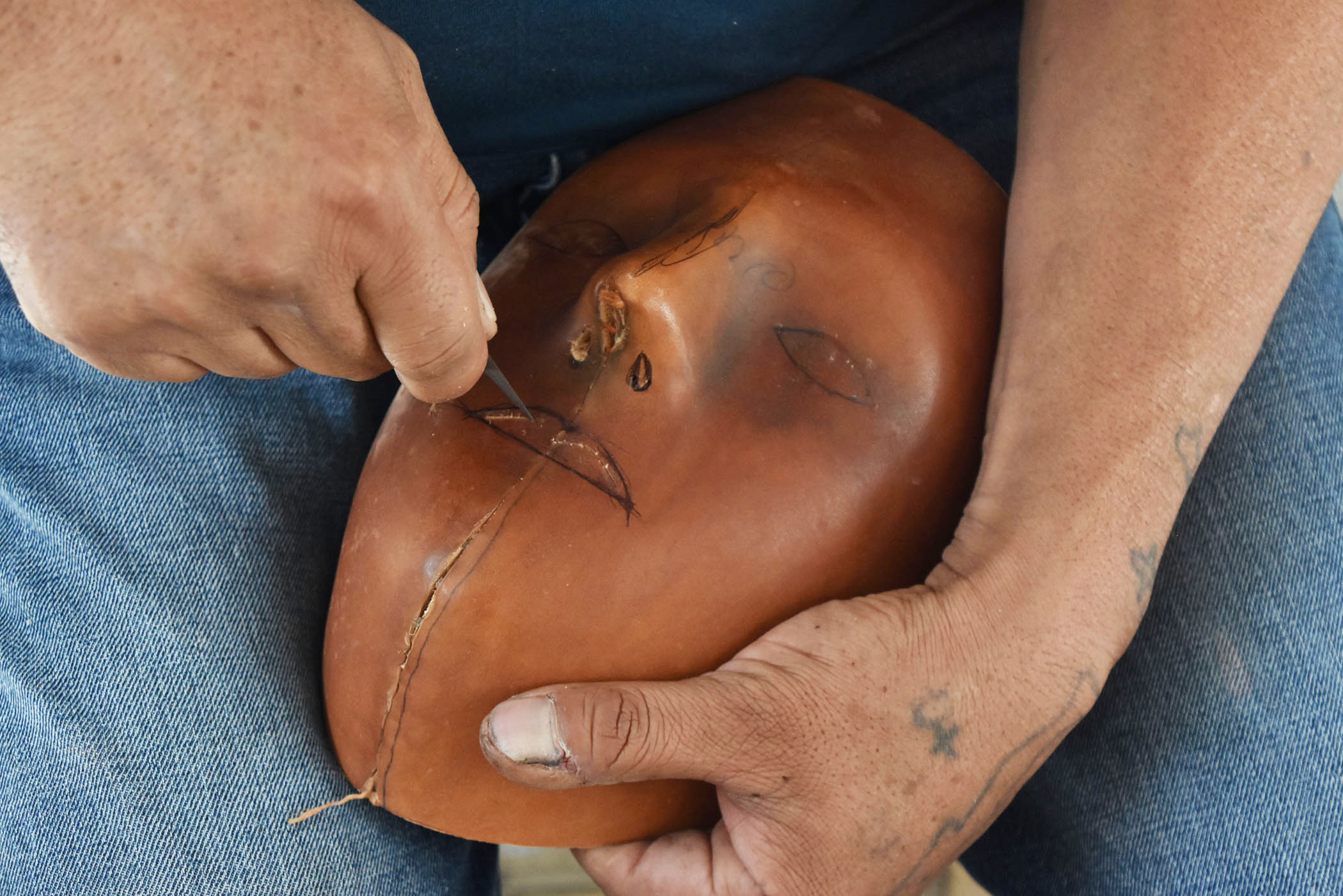
Masks have been used in many cultures and countries, including Mexico, for millennia. The oldest masks discovered to date were found in the hills and deserts within 20 miles of Jerusalem and are about 9000 years old. They are all made of stone and depict human faces. Wood and leather were probably also used to make masks—and could have been in use long before those stone masks—but none that old have survived. Or been discovered yet. The oldest wooden mask found so far dates from around 900 CE and was found in Angola.
Masks were, and are, used for a variety of reasons and in a variety of rituals or ceremonies. They’re used to change the person wearing it, to allow them to enter an altered state or to come into contact with the supernatural. They may also be used during fiestas, carnavals, ceremonies and rituals. In almost all of these events, people will dance for hours, something that also puts them in an altered state. In Mexico, virtually all pre-Hispanic cultures used masks. They were used during funerals, fertility rituals, ceremonies and celebrations. Their use continues today. One of the best examples of contemporary use has to be carnaval, an event that takes place around Holy Week. And one of the most dramatic examples I’ve experienced is carnaval in Huejo. “Huejo is the cradle of carnaval,” Javier stated.
Huejo’s carnaval lasts four days, beginning the Saturday before Ash Wednesday, with parades that can have as many as 25,000 participants. And just about everyone is wearing a mask. That’s a lot of masks and although masks made in Huejo can last 70 or 80 years, new ones are needed every year. “We prepare for [carnaval] all year,” Javier said.
Javier is the fourth generation of mascareros (mask-makers) in his family. He learned from his brother and mother when he was ten. “Little by little, I understood the method and the creativity and eventually developed my own style,” he said. “It takes at least two years to learn the basic techniques and with time one becomes adept. To be considered a master takes at least seven years of experience. Everything is done by hand. You have to have the knowledge but the details are in the practice.”
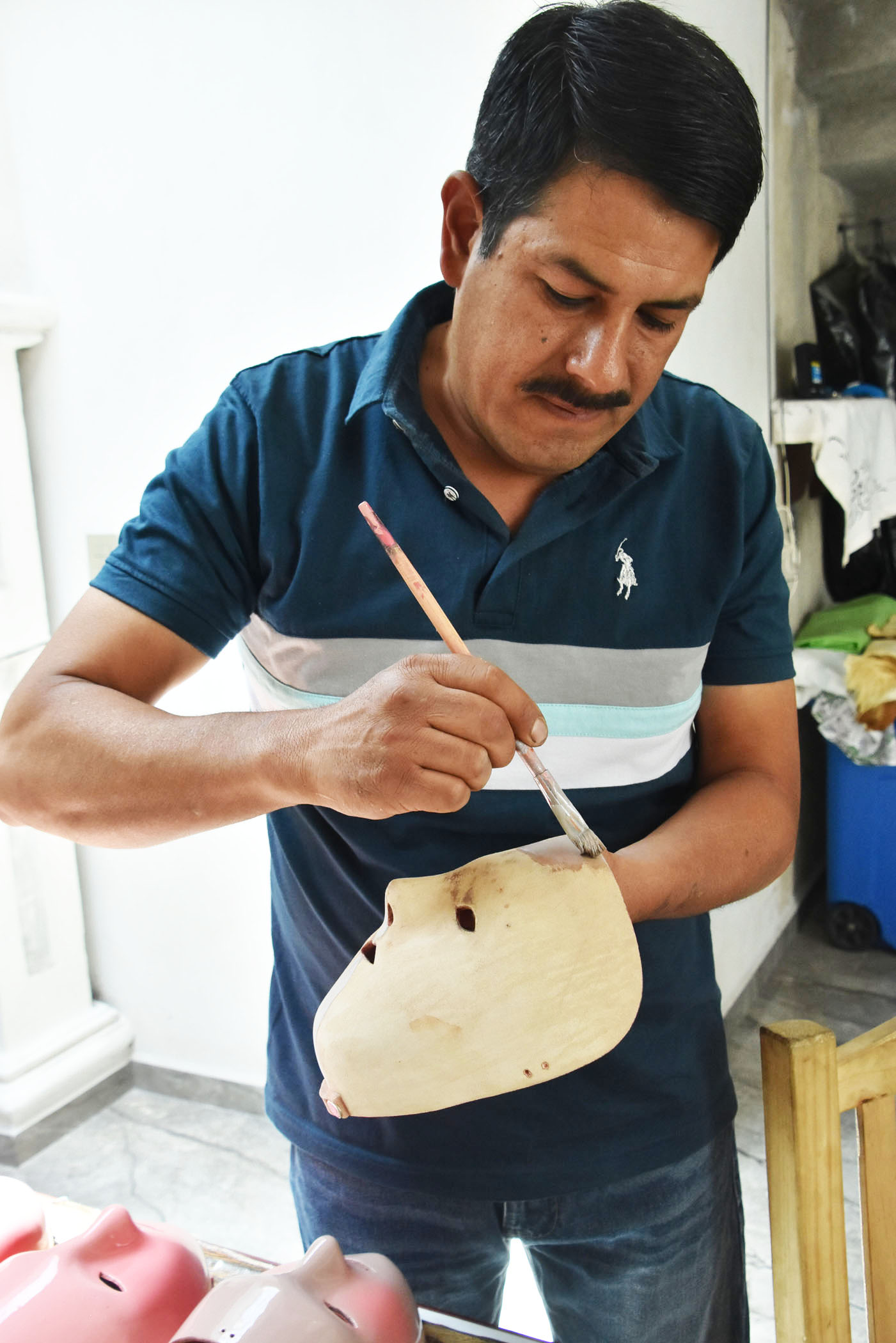
After cutting the leather, which has been moistened, Javier sews the two sides together. With a small hammer, he gently taps the leather to fit a solid wooden mold that’s shaped like a face and then connects it to the back with small nails. “We use tools that we make ourselves,” he said. Next, he uses a pen to sketch in the eyes, nostrils and mouth and then cuts them out with a small blade. “Everything is done with exact measurements,” he explained. Using sandpaper, he scrapes away the outer surface of the leather, leaving it smooth and ready to paint. “The paint is enamel,” he said. “I give it four or five coats.” This leaves the mask hard and looking shiny. So hard and shiny, in fact, that I thought the ones he showed me were ceramic. The final steps for most involve adding eyebrows, a moustache and beard. These may be made from human or animal hair or synthetic wool.
Graciela Linares Jiménez, Javier’s wife and co-worker, listed seven different groups that parade during Huejo’s carnaval while another person told me there are eight. Whatever the exact number, it’s certain that each group has its characteristic mask, each with different facial hair.
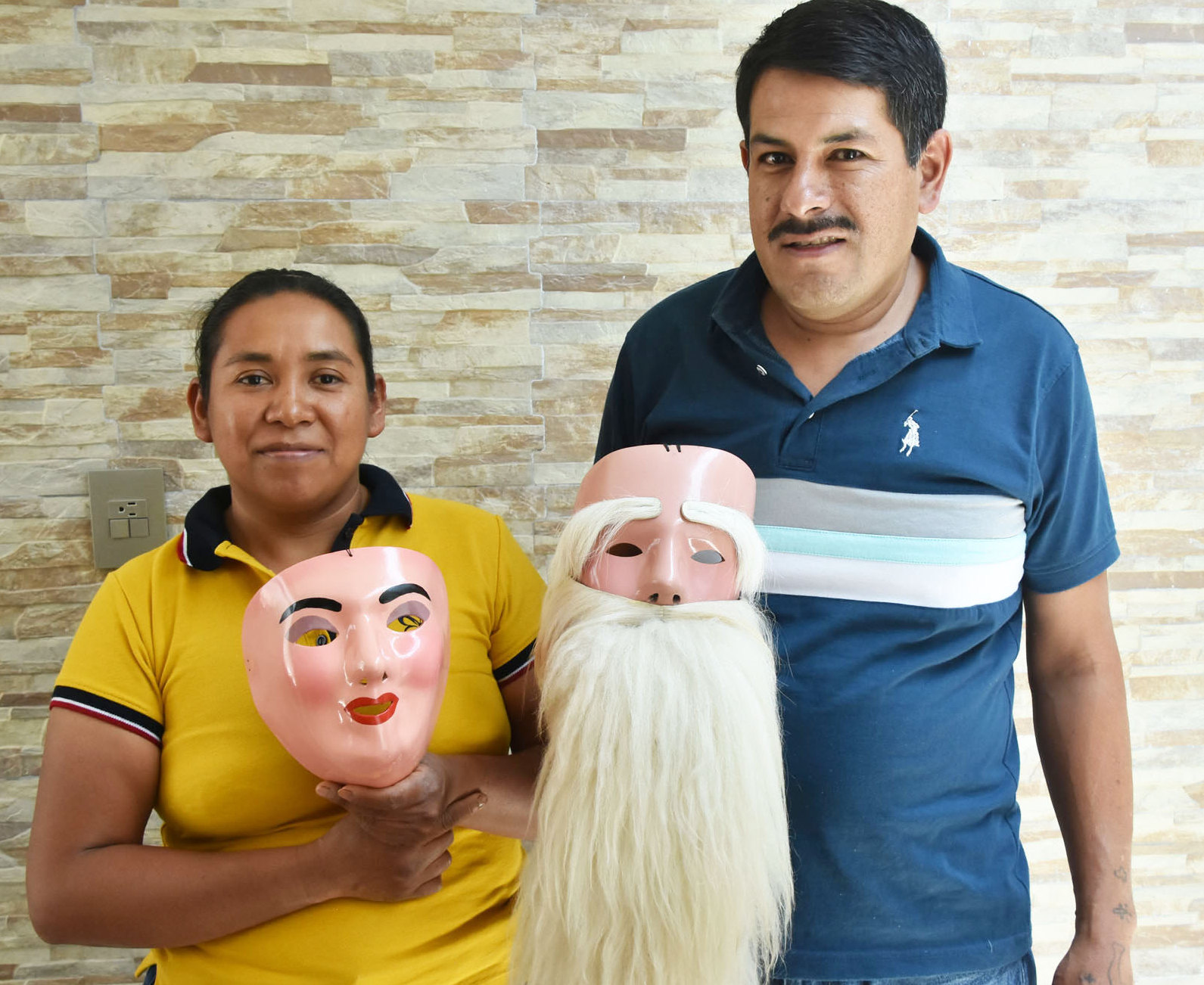
Despite the need for masks, Javier figured there were only ten mascareros in Huejo. Raúl Linares Valdivia is another one I visited.
As soon as I entered his home, Raúl launched into an explanation of Huejo’s carnaval. “Carnaval in Huejo started about 150 years ago,” he told me. “The mask represents the battle of Cinco de Mayo. Our carnaval represents the invasion of the Spanish and French.”
Like Javier, Raúl learned to make masks from a family member. In this case, his father, who was the first in the family to make them. “In the beginning, his masks were very basic,” he said, “but eventually became more complex.” When asked how long it takes to learn how to make masks, he told me, “I believe it really takes one’s whole life. My father started to make them and with time he perfected them. The mask is perfected all the time. One needs to make corrections because every person has specific features and the mask must be adjusted to them. As artisans, we make the corrections.”
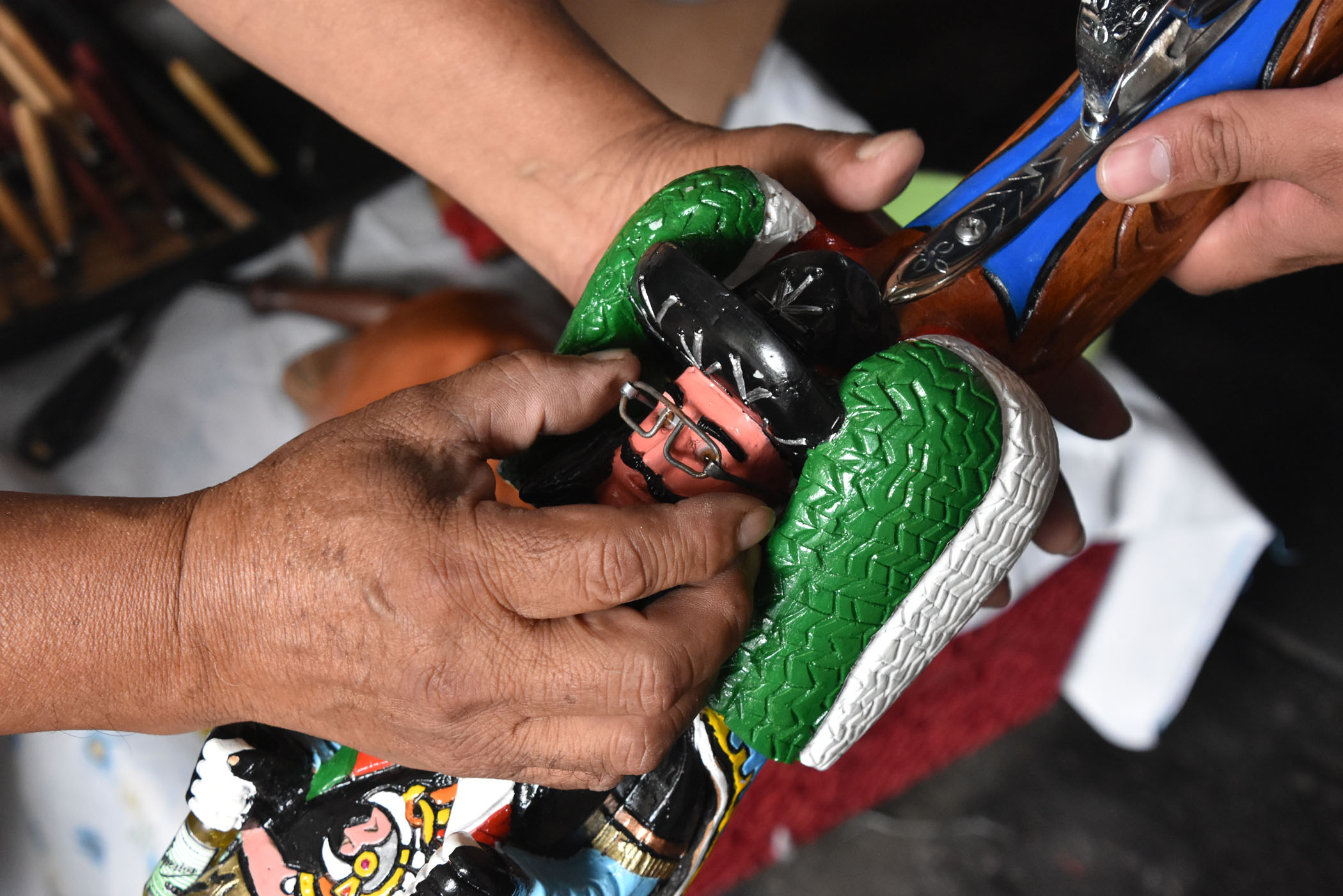
Raúl’s masks are similar to Javier’s but there are differences. While it takes Javier two weeks to complete one, Raúl can finish one in four days. “It depends on the weather being good (that is, dry),” he said, “and sunny. The work is done by the whole family. The women make the beards.” He also uses leather made from bulls, rather than cow or pig. His more complex masks have moveable eyelids and eyes, which—at least for me—give the mask a slightly unsettling effect. He also makes miniature masks that he sells for souvenirs.
Raúl also makes another one of the important items used in carnaval: mosquetones, the huge rifles carried—and fired (loudly)—by many.
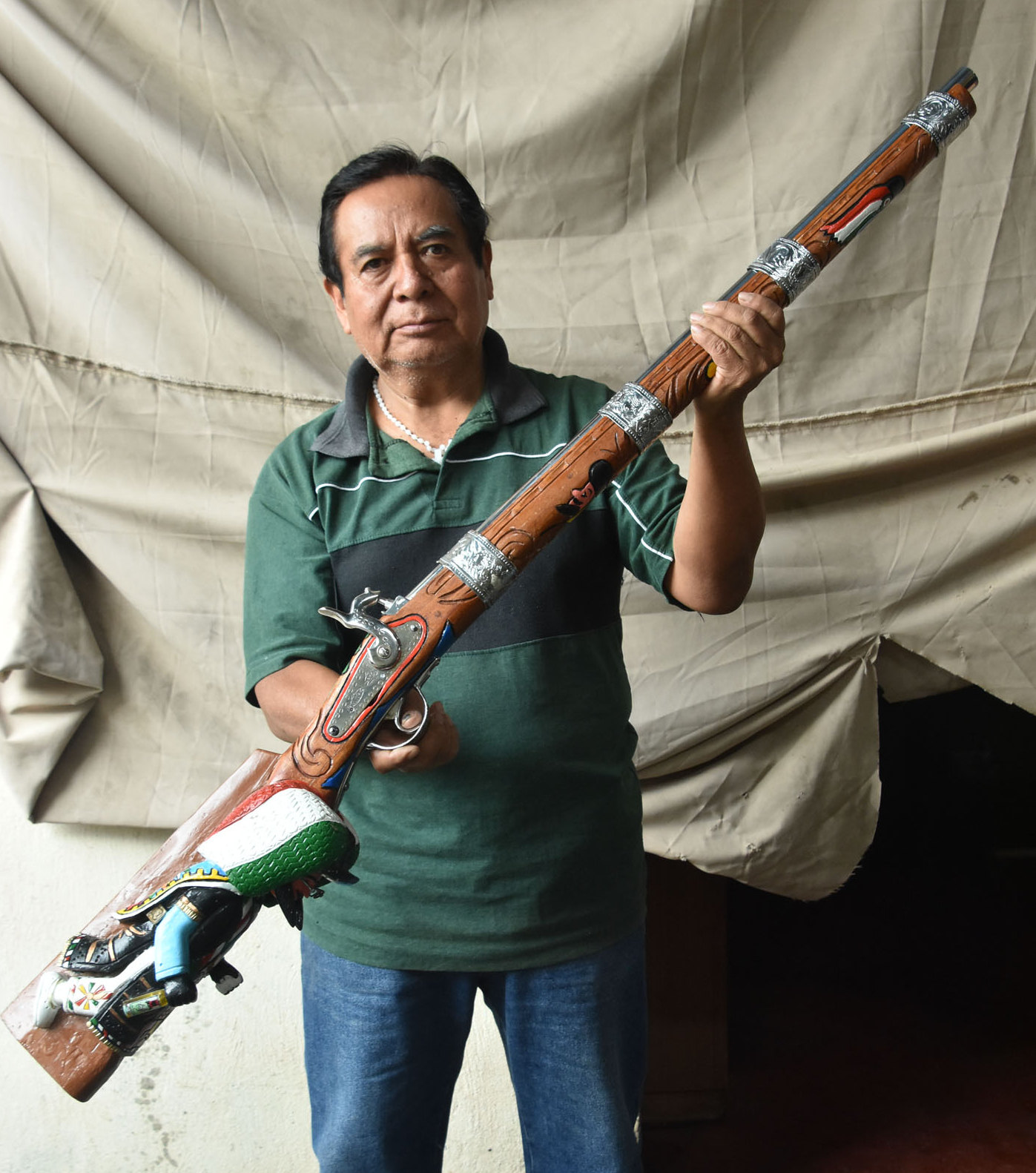
“The rifles are made from walnut,” he said. “The best rifles are walnut because they are stronger. Before, the rifles did not have figures but with time, that changed.” He carves elaborate figures on the rifle’s stock and then paints them with vibrant colors. The figures are extremely detailed, including one to which he attached miniature eyeglasses. It takes him about three months to make one rifle.
Both Javier and Raúl estimate they can make 50 to 60 masks a year, with Javier’s costing $3,500 pesos (just under $200 USD) and Raúl’s ranging from $1,200 (around $70 USD) to $1,800 ($100 USD). Raúl’s miniatures go for $200 pesos (around $10 USD). One of his smaller, basic rifles runs $4,500 pesos ($250 USD) with larger, more elaborate ones costing $7,000 (almost $400 USD).
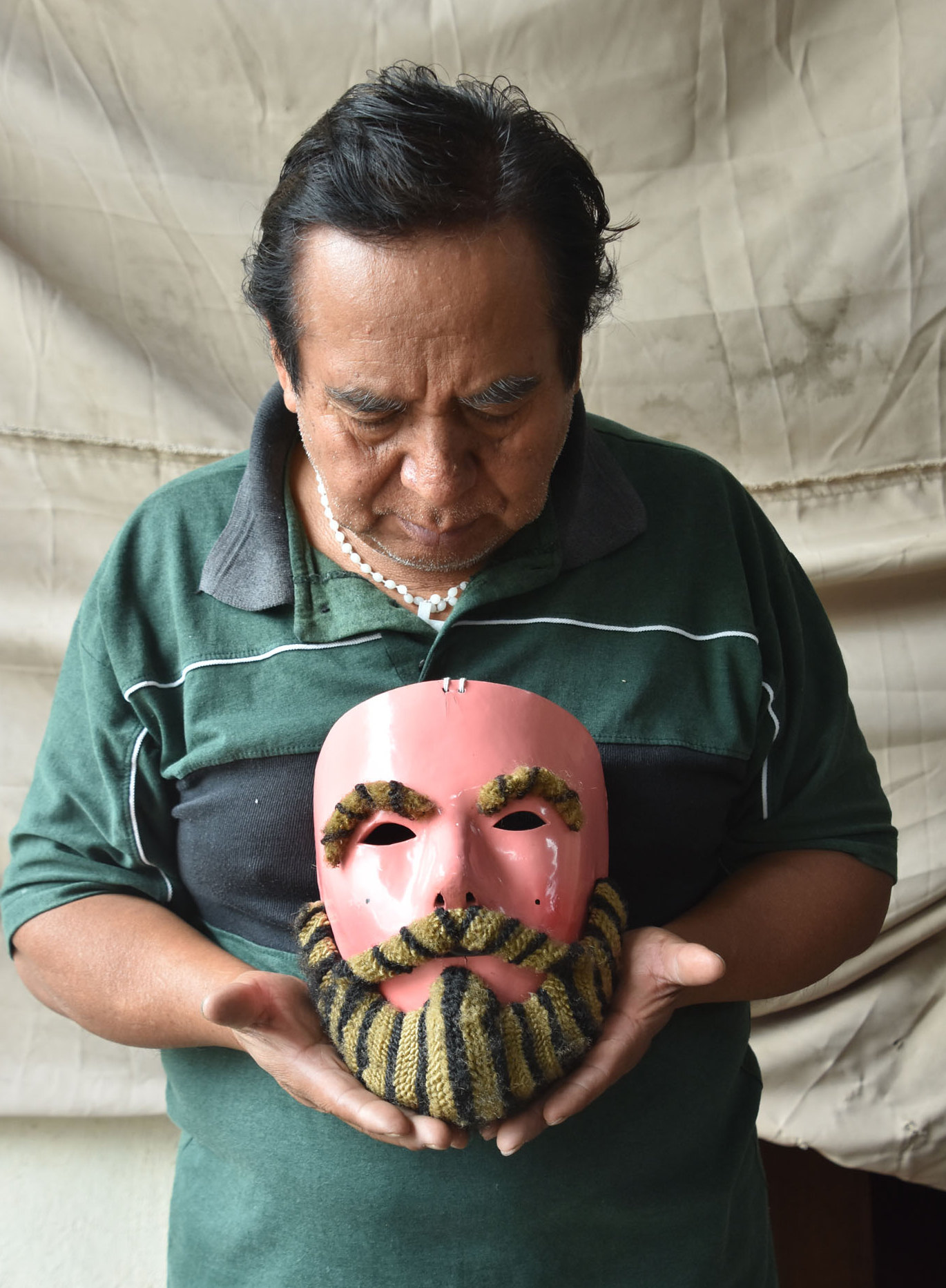
I’ve read about what wearing a mask can do to a person, but I wanted a first-person account. David Quechol Deolarte, who accompanied me to both Javier and Raúl’s, is a member of Turco, a group that marches during carnaval. So I asked him what happens when he dons a mask. “It is a transformation when I put on a mask,” he said. “You stop being yourself and start a process of metamorphosis. You become a different person. You enter a different world.”
If you’re interested in buying one of Javier’s masks, call Graciela at: (227) 113-1877. For Raúl’s masks or rifles, (227) 153-4198. From the US, first dial 011-52 and then the rest of the number. Please be aware that they only speak Spanish.
Related articles on MexConnect
- World class mask museum in the city of Zacatecas
- Huichol artwork: masks
- Wandering warriors: the Tastoan masks of Prudencio Guzman
- Masks of Mexico – Mascaras de Mexico
- Masks and feather headdresses: Mexicans celebrate danzas
Joseph Sorrentino is a journalist, photographer and playwright. His website is www.sorrentinophotography.com. His book Stinky Island Tales: Some Stories From An Italian-American Childhood (Amazon) is a collection of four stories in English and Spanish with 26 drawings. It’s available as both a paperback and Kindle version.
Published or Updated on: August 6, 2024 by Joseph Sorrentino © 2024

